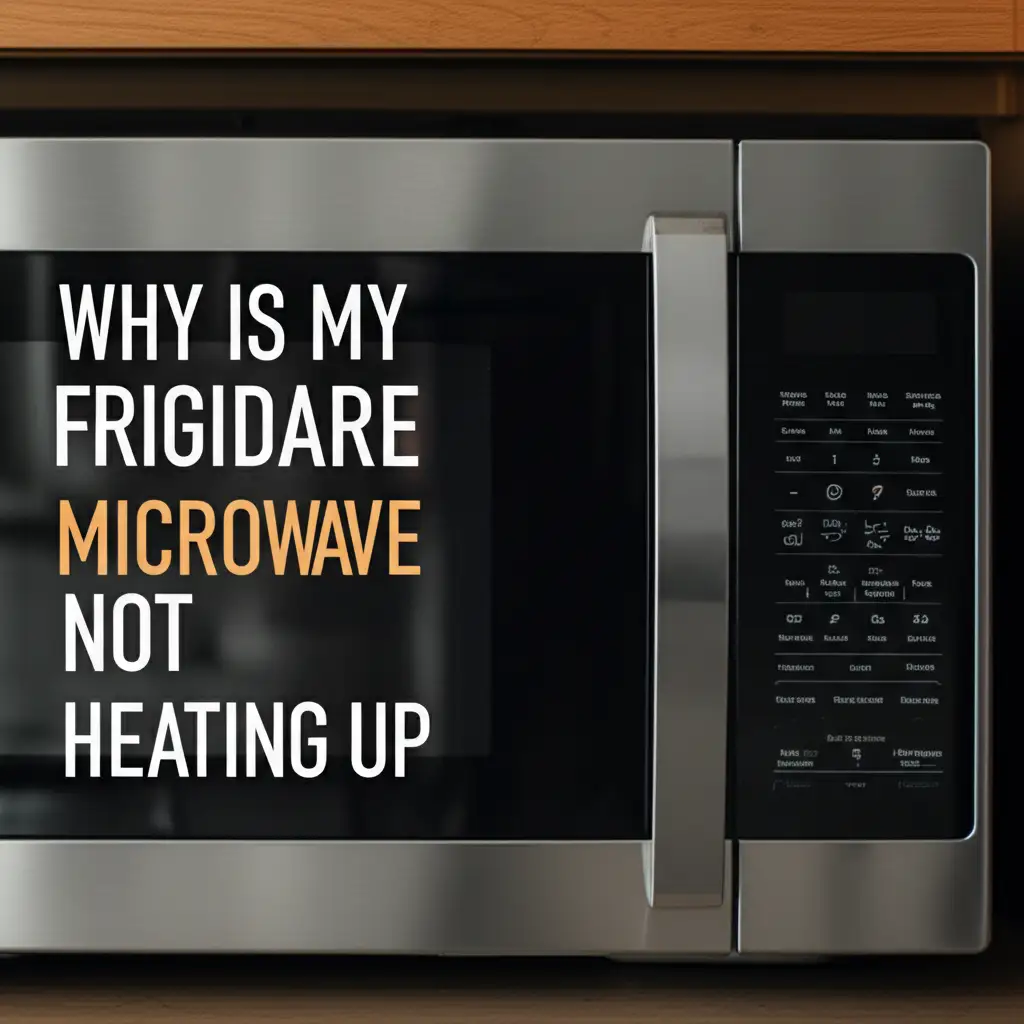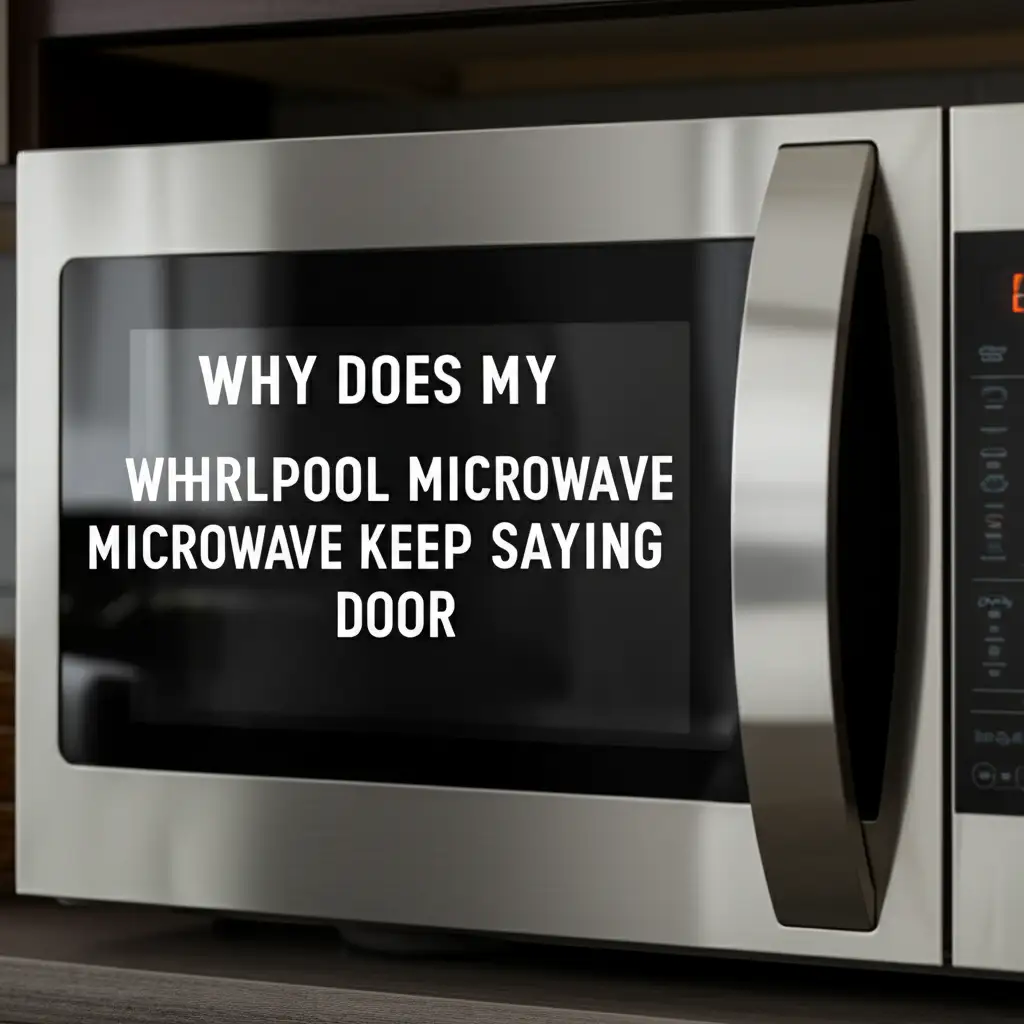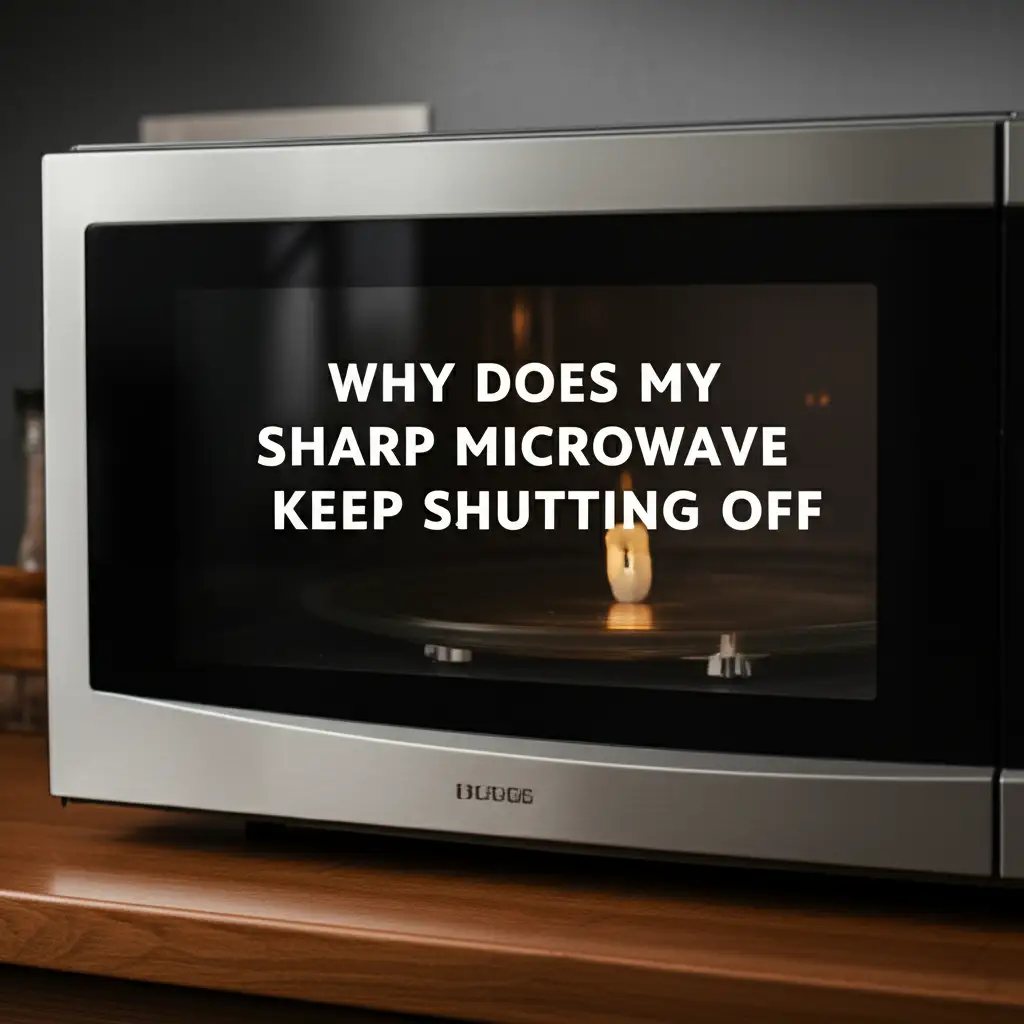· Katria Melrose · Home Improvement · 18 min read
Why Is My Frigidaire Microwave Not Heating Up

Troubleshooting Your Frigidaire Microwave: Why It’s Not Heating Up
Few things are as frustrating as placing food in your microwave, hearing it hum, and then finding your meal still cold. If your Frigidaire microwave is not heating up, you are not alone. This issue is a common problem for many microwave owners. I understand how essential a working microwave is in a busy kitchen.
In this guide, I will walk you through the most frequent reasons why your Frigidaire microwave might not be heating. We will explore simple checks you can perform at home. You will learn about key components like door switches, fuses, and even the magnetron. My goal is to help you diagnose the problem safely and effectively. We will cover everything from basic resets to understanding when professional help is needed.
Takeaway
- Always unplug your microwave before any inspection or repair.
- Start troubleshooting with the simplest checks like door switches and circuit breakers.
- Inspect the internal fuse, as it often blows when other components fail.
- High-voltage components like the magnetron, diode, and capacitor store dangerous electrical charges.
- Consider professional repair for internal electrical issues to ensure your safety.
Your Frigidaire microwave is not heating up most often due to a faulty door interlock switch, a blown thermal fuse, or a damaged high-voltage component like the magnetron or diode. These issues prevent the microwave from generating heat, even if other functions appear normal.
Understanding Your Frigidaire Microwave’s Heating System
Your Frigidaire microwave uses a sophisticated process to heat food. It converts electricity into microwave radiation. This radiation excites water molecules in food, making them vibrate rapidly. This vibration generates heat, which cooks your meal.
Several key components work together to make this happen. The magnetron generates the microwaves, while the transformer steps up the voltage. The diode and capacitor work to convert and store this high voltage. Safety switches, like door interlocks and thermal cut-offs, prevent the microwave from operating unsafely. If any part of this system fails, your Frigidaire microwave will stop heating food.
Before you begin any troubleshooting, safety is extremely important. Microwaves contain high-voltage capacitors that can store a lethal electrical charge, even when unplugged. Always unplug the appliance from the wall outlet. If you are uncomfortable working with electrical components, stop here and call a qualified technician. I strongly recommend caution during all steps.
Checking the Door Latch and Interlock Switches
One of the most common reasons your Frigidaire microwave is not heating up involves the door system. Microwaves have safety mechanisms built into the door. These mechanisms ensure the microwave cannot operate when the door is open. If any part of this system fails, the microwave will run, but it will not produce heat.
Your microwave typically has three interlock switches. These switches are located behind the door latch mechanism. When you close the door, the latches engage these switches. If even one switch is faulty or misaligned, the microwave’s heating function will be disabled. This is a primary safety feature.
To check these switches, you first need to unplug your Frigidaire microwave. Carefully inspect the door latches for any visible damage or misalignment. Sometimes, the plastic latches can break or bend. A misaligned door prevents the switches from activating correctly.
- Visual Inspection: Look closely at the door and the microwave cavity. Ensure the door closes securely and evenly. There should be no gaps.
- Switch Test (Advanced): If you are comfortable and have a multimeter, you can test the continuity of each switch. You will need to remove the microwave’s outer casing to access them. Each switch should show continuity when the door is closed and no continuity when the door is open. If a switch fails this test, it needs replacement.
A malfunctioning door switch is a frequent cause of a microwave running but not heating. You might notice the light turns on and the turntable spins, but no heat is produced. This is the microwave’s way of telling you a safety mechanism is active. For general troubleshooting on similar issues, you might find it helpful to compare with how other brands handle this, such as why is my LG microwave working but not heating or why is my GE microwave running but not heating.
Diagnosing a Blown Microwave Fuse
A blown fuse is another common culprit when your Frigidaire microwave is not heating up. Microwaves contain a high-voltage fuse that protects the appliance from power surges or component failures. If this fuse blows, it cuts off power to the high-voltage circuit. This means the magnetron, which generates the microwaves, will not receive power, and your food will not heat.
You might notice other signs that the fuse has blown. For instance, the microwave may seem completely dead, with no lights or display. However, sometimes only the heating function stops while the display and turntable still work. This indicates a blown internal fuse specifically for the high-voltage side. This is distinct from your home’s circuit breaker tripping. If your microwave is tripping your home breaker, this often points to a larger electrical issue within the unit itself. You can find more details on why your Frigidaire microwave might trip your breaker by checking out why is my Frigidaire microwave tripping the breaker.
To check the fuse, you must first unplug the microwave from the power outlet. Safety is critical here. The fuse is usually located near the power cord entry point, often behind the control panel or within a specific fuse compartment. You will likely need to remove the outer casing of the microwave to access it.
- Locate the Fuse: Refer to your Frigidaire microwave’s service manual for the exact fuse location. It often looks like a small glass tube with metal caps on both ends.
- Visual Check: A blown fuse will often have a visible break in the wire filament inside the glass. It might also appear discolored or cloudy.
- Continuity Test (Recommended): The most reliable way to check a fuse is with a multimeter. Set the multimeter to the continuity setting. Place the probes on each end of the fuse. If the fuse is good, the multimeter will show continuity (a beep or a reading close to zero ohms). If it’s blown, it will show no continuity or an open circuit.
If you find a blown fuse, replacing it is usually straightforward. However, remember that a fuse blows for a reason. If it blows again shortly after replacement, it indicates a deeper problem within the microwave’s high-voltage system. This could be a shorted magnetron, capacitor, or diode. If your Frigidaire microwave keeps blowing fuses, investigating these components is essential. You can learn more about this specific issue by looking into why does my Frigidaire microwave keep blowing fuses. Always replace the fuse with one of the exact same amperage and voltage rating.
Troubleshooting the High Voltage Diode and Capacitor
When your Frigidaire microwave is not heating up, even if it hums and the light works, the high-voltage diode or capacitor could be at fault. These components are part of the microwave’s high-voltage circuit. They are responsible for supplying the extremely high voltage needed for the magnetron to function. A failure in either of these parts will stop microwave generation.
The high-voltage capacitor stores a powerful electrical charge. It acts like a battery for the magnetron. The high-voltage diode works with the capacitor and transformer. It converts the alternating current (AC) into direct current (DC) and doubles the voltage. If the diode fails, it usually shorts out, which can prevent the capacitor from charging correctly. If the capacitor fails, it might not store charge, or it might become shorted itself. Both scenarios stop the microwave from heating.
WARNING: The high-voltage capacitor can store a lethal electrical charge even after the microwave is unplugged. Never touch these components without properly discharging the capacitor first. If you are unsure how to do this safely, do not proceed. Seek professional help.
To safely check these components:
- Unplug the Microwave: Disconnect the power cord from the wall outlet.
- Access Components: Remove the outer casing of the microwave to expose the internal parts. The capacitor is typically a large cylindrical component, and the diode is a smaller, often black, rectangular component connected to it and the transformer.
- Discharge the Capacitor: Using a ceramic resistor or an insulated screwdriver with a clip wire connecting to the metal chassis, carefully touch both terminals of the capacitor simultaneously. Hold it for several seconds to ensure it is fully discharged. You might hear a pop or see a spark. This step is absolutely essential for your safety.
- Test the Diode: A multimeter can test the diode. It should allow current to flow in one direction only. If it shows continuity in both directions or no continuity at all, it is faulty.
- Test the Capacitor: Testing a high-voltage capacitor requires a special capacitance meter. A simple continuity test with a regular multimeter can only tell you if it’s shorted (shows continuity) or open (no continuity). If it’s shorted, it needs replacement. If it’s open, it also needs replacement.
I cannot stress enough the danger associated with these components. If you are not experienced with electrical repairs, or if you do not have the proper tools, please consider this a clear sign to call a professional. Working on these parts yourself can be extremely dangerous. However, if you are seeking general repair knowledge that may overlap, understanding how to repair heating issues in other models can be insightful, such as methods described for how to repair LG microwave oven not heating.
Identifying a Faulty Magnetron
The magnetron is the core component responsible for heating food in your Frigidaire microwave. It is essentially a vacuum tube that converts electrical energy into high-frequency microwave radiation. This radiation is then directed into the cooking cavity, causing food molecules to vibrate and heat up. If your Frigidaire microwave is running but not heating, a faulty magnetron is a very strong possibility.
A dying or dead magnetron often manifests in specific ways. You might hear the fan running, the turntable spinning, and the light turning on, but the food remains completely cold. Sometimes, a faulty magnetron can produce a strong burning smell or cause unusual buzzing noises. In some cases, it might even trip your circuit breaker or blow the microwave’s internal fuse. If your GE microwave is not heating food but runs, or your LG microwave shows similar symptoms, it’s often the magnetron. You can explore similar issues and troubleshooting methods for other brands like why is my GE microwave not heating food but runs or why is my LG microwave not heating food but runs.
Diagnosing a faulty magnetron without proper equipment is difficult and highly discouraged due to the extreme danger. The magnetron works with extremely high voltage, making it one of the most hazardous parts to handle. Under no circumstances should you attempt to test or replace the magnetron yourself unless you are a qualified and experienced technician. The high voltage capacitor connected to it stores lethal charges.
- Signs of Failure:
- Microwave runs but food stays cold.
- Burning smell originating from the microwave.
- Loud buzzing or humming noise during operation.
- Microwave trips the circuit breaker frequently.
- The unit generates a minimal amount of heat, but not enough to cook effectively.
If you suspect your magnetron is the problem, the safest course of action is to call a professional appliance repair technician. They have the necessary training, tools, and safety equipment to diagnose and replace this component. Replacing a magnetron is also often costly, sometimes making it more economical to replace the entire microwave, especially if it is an older model. Prioritizing safety over a DIY attempt is always the best choice here.
Inspecting the Thermal Protector and Thermostat
Your Frigidaire microwave is equipped with safety devices called thermal protectors or thermostats. These components are designed to prevent the microwave from overheating. They act as a safety cut-off switch. If the microwave’s internal temperature exceeds a safe limit, the thermal protector will trip. This immediately cuts power to the high-voltage circuit, stopping the heating process.
An overheating condition can occur for various reasons. Poor ventilation, a faulty cooling fan, or even continuous extended use can cause the internal temperature to rise. When the thermal protector trips, your microwave will stop heating. It might still have power to the display and light, but the heating function will be disabled. Once the microwave cools down, some thermal protectors reset automatically. Others require manual resetting or replacement.
To inspect these components, first, unplug your microwave from the power outlet. You will need to access the internal components by removing the outer casing. Thermal protectors are usually small, round, disc-shaped components. They are often located near the magnetron or on the top of the microwave cavity. They have two wires connected to them.
- Locate the Thermal Protector: Consult your microwave’s service manual or parts diagram to find its exact location.
- Visual Check: Look for any signs of physical damage or burn marks on the protector itself.
- Continuity Test: Use a multimeter set to continuity mode. Touch the probes to the two terminals of the thermal protector. A healthy thermal protector should show continuity (a beep or low resistance reading). If it shows no continuity, it means it has tripped or failed and needs replacement.
If the thermal protector has tripped, allow the microwave to cool down completely for at least 30 minutes. If it resets, the microwave might start heating again. However, if it trips repeatedly, it indicates an underlying issue. This could be a faulty cooling fan, a shorted high-voltage component causing excessive heat, or simply an old thermal protector losing its calibration. Replacing a thermal protector is a relatively simple task once the microwave is safely unplugged and discharged. However, addressing the root cause of the overheating is important to prevent future issues.
Evaluating the Control Board and Other Electrical Issues
While less common, the control board or other electrical issues can sometimes be why your Frigidaire microwave is not heating up. The control board acts as the “brain” of your microwave. It manages all functions, including timing, power levels, and activating the high-voltage circuit. If the control board malfunctions, it might fail to send the correct signals to the heating components. This means the magnetron will not receive power, and your food will not heat.
Symptoms of a faulty control board can vary widely. Your display might be erratic, buttons might not respond, or certain functions simply won’t initiate. Sometimes, the microwave appears to run normally (fan, light, turntable), but no heat is produced. This suggests the high-voltage circuit isn’t being activated. It’s also possible for loose wire connections or frayed wires to prevent current from reaching heating components. While the microwave’s diagnostic systems can be complex, understanding basic electrical pathways helps.
- Signs of Control Board Issues:
- Inconsistent or unresponsive buttons.
- Display issues (blank, flickering, incorrect information).
- Specific functions (like heating) not working, while others do.
- Burning smell from the control panel area (though this is rare).
Diagnosing a faulty control board requires advanced electrical knowledge and proper testing tools. You cannot easily test a control board without specialized equipment. Visual inspection might reveal burnt components or solder joints. However, a component that looks fine can still be faulty internally.
- Check Wiring: Before suspecting the control board, always perform a visual check of all accessible wiring. Ensure all connectors are firmly seated. Look for any signs of burnt, frayed, or disconnected wires.
- Professional Diagnosis: If you have ruled out all other common issues (door switches, fuse, magnetron, diode, capacitor, thermal protector), the control board is the next logical step. However, replacing a control board is often expensive. It also requires careful handling due to sensitive electronic components. If you are not an experienced appliance technician, I highly recommend consulting a professional. Attempting to repair a control board yourself can cause further damage to the microwave. This is usually the last resort in troubleshooting your Frigidaire microwave.
When to Call a Professional for Your Frigidaire Microwave
I’ve covered many possible reasons why your Frigidaire microwave might not be heating up. We looked at common issues like door switches and fuses. We also discussed more complex parts like the magnetron, diode, and capacitor. While some troubleshooting steps are straightforward, many internal repairs involve significant electrical hazards. The high-voltage capacitor, in particular, can store a lethal charge even when the microwave is unplugged.
Therefore, knowing when to stop troubleshooting and call a professional is extremely important. Your safety should always be the top priority. If you encounter any of the following situations, I strongly advise you to contact a qualified appliance repair technician:
- You Are Uncomfortable with Electrical Work: If you do not have experience with electrical circuits or feel unsure about any step, do not proceed. Live electricity can cause severe injury or even death.
- Handling High-Voltage Components: The magnetron, high-voltage diode, and capacitor carry dangerous electrical charges. Testing or replacing these parts requires specialized knowledge, tools, and safety precautions. A professional technician has the expertise to safely discharge capacitors and work with these components.
- Repeated Blown Fuses: If you replace the fuse and it blows again shortly after, it signals a deeper, more serious electrical fault within the microwave. This indicates a short in a critical component that needs expert diagnosis.
- No Visible or Obvious Cause: You have checked the door switches, the thermal protector, and the basic power supply. If your Frigidaire microwave still isn’t heating, the problem likely lies in the high-voltage circuit. This is where a professional’s diagnostic tools and experience become invaluable.
- Cost vs. Replacement: Sometimes, the cost of repairing a major component like the magnetron or control board can be nearly as much as buying a new microwave. A professional can provide an accurate estimate. This helps you decide if repair is the best option or if replacing your microwave makes more sense economically. For instance, sometimes older units might have other issues develop soon after a major repair.
A professional technician can quickly and safely diagnose the precise problem. They have access to genuine replacement parts and the expertise to install them correctly. While a DIY approach can save money on simple fixes, internal microwave repairs are an exception where professional help is worth the investment for your safety and the proper functioning of your appliance.
FAQ Section
Q1: Why does my Frigidaire microwave hum but not heat?
Your Frigidaire microwave humming but not heating usually points to a problem with its high-voltage components. This often means the magnetron, high-voltage diode, or capacitor is faulty. It could also be a tripped thermal protector or a malfunctioning door interlock switch. These issues prevent the microwave energy from generating, even though the fan and light may still operate.
Q2: Is it safe to use a microwave that isn’t heating?
No, it is not safe to use a microwave that is not heating. While it might seem harmless if it’s just not heating, the underlying cause could be a dangerous electrical fault. A faulty magnetron, shorted capacitor, or other electrical issues can pose risks. These risks include fire hazards, electrical shock, or further damage to the appliance. Always unplug it until repaired.
Q3: How much does it cost to replace a magnetron in a Frigidaire microwave?
Replacing a magnetron in a Frigidaire microwave can be expensive, often ranging from $150 to $300 or more, including parts and labor. The exact cost depends on your microwave model and technician rates. Given the cost, sometimes buying a new microwave, especially for older or less expensive models, is a more economical choice than paying for magnetron replacement.
Q4: Can a dirty microwave cause it to stop heating?
While a dirty microwave doesn’t directly cause it to stop heating, excessive grime or food debris inside the cavity can sometimes interfere with the microwave’s performance. Food splatters can absorb some microwave energy, reducing heating efficiency. More importantly, accumulated grease can pose a fire hazard. However, a complete lack of heating usually indicates a component failure rather than just dirt.
Q5: How do I reset my Frigidaire microwave if it’s not heating?
To reset your Frigidaire microwave, simply unplug it from the wall outlet for at least 5-10 minutes. Then, plug it back in. This soft reset can sometimes clear minor electronic glitches. If the heating problem persists after a reset, the issue is likely a hardware failure requiring further diagnosis and possibly part replacement.
Conclusion
Finding your Frigidaire microwave not heating up can certainly disrupt your kitchen routine. We have explored the most common reasons behind this problem, from simple door switch issues to more complex high-voltage component failures. I showed you how important it is to approach microwave troubleshooting with extreme caution. The internal components of a microwave carry dangerous electrical charges.
Remember to always prioritize your safety. Start with the easiest checks like ensuring the door closes fully and the microwave is plugged in. Progress to checking fuses and then, with proper safety knowledge, to the high-voltage parts. For anything beyond basic troubleshooting, I strongly recommend calling a qualified appliance repair professional. They have the expertise and tools to safely diagnose and fix your microwave. Getting your Frigidaire microwave working again means your kitchen will be back to full efficiency, helping you prepare meals easily and safely.





